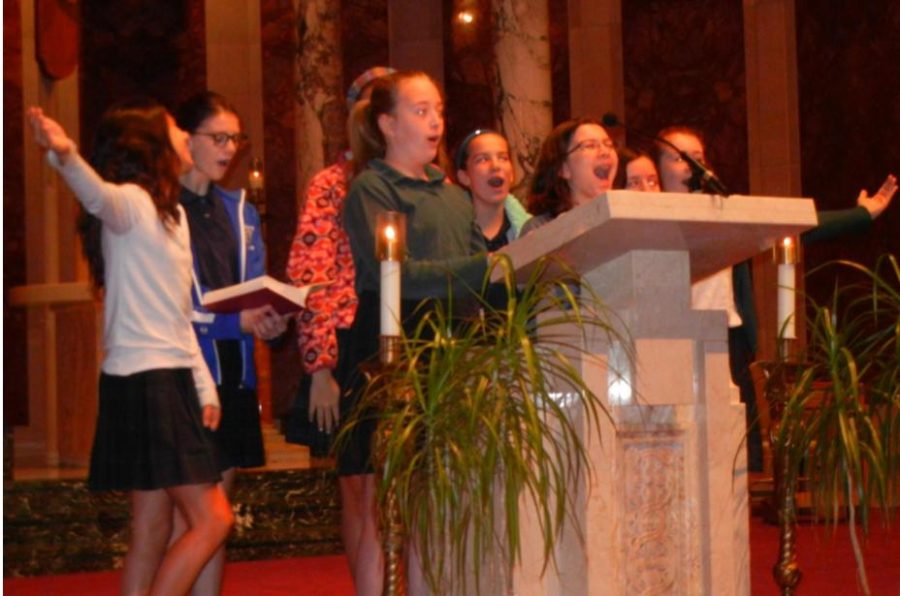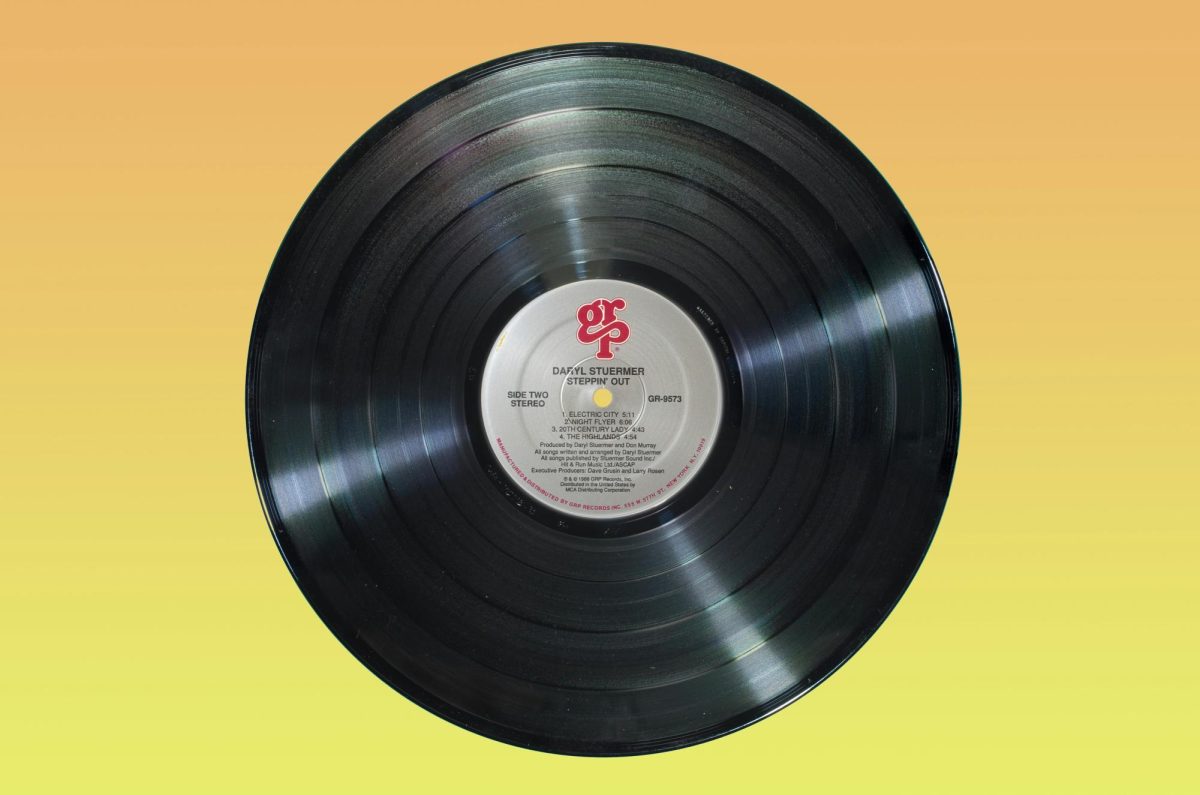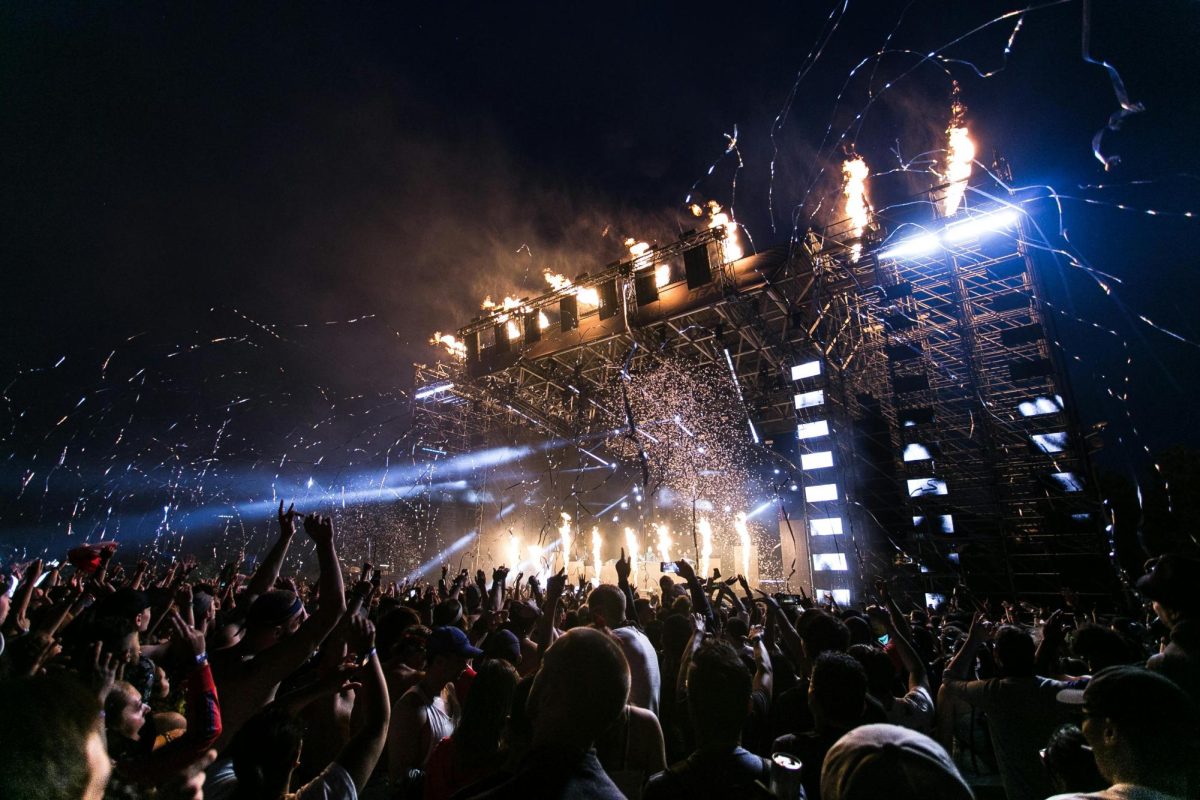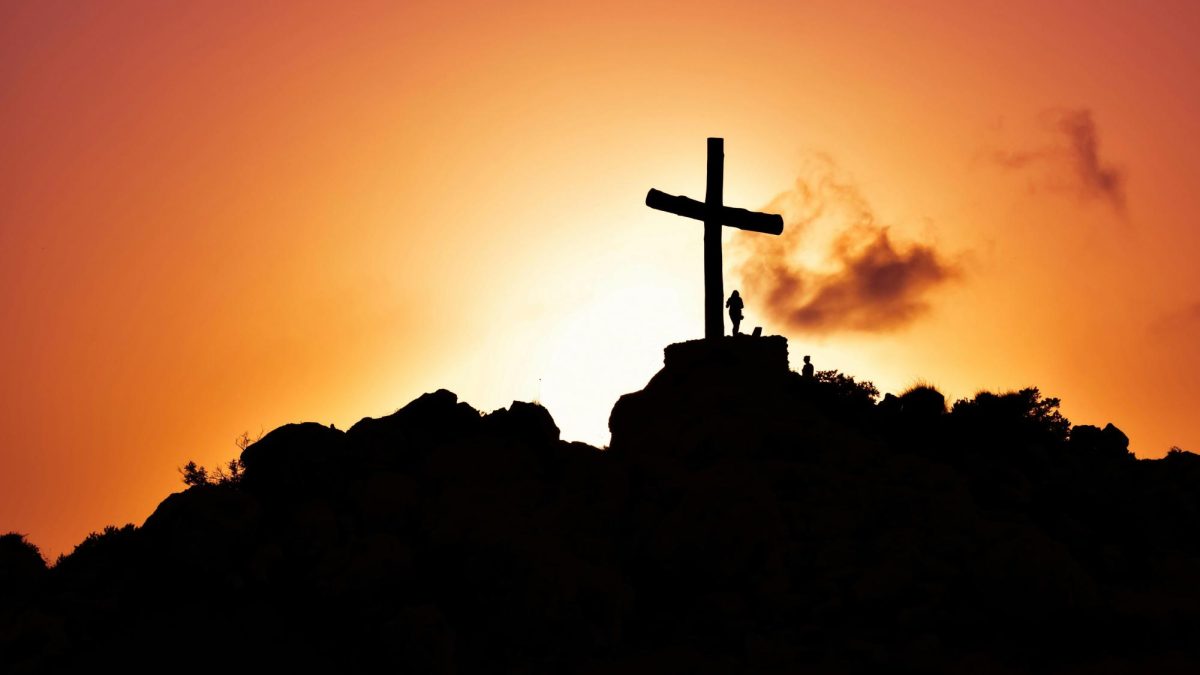The Inside Scoop on Cantors
December 1, 2016
You hear them sing. Don’t you want to know what goes on behind the pretty voice?
According to Dr. Deluca, the man that organizes the cantors and plays the piano during school masses explains, “A cantor is the vocal soloist and leader of song in the Roman Catholic mass.” This is important because without the cantors, the congregation -all those in the pews- wouldn’t know what to sing when it was time for a hymn.
“A cantor leads the congregation and communicates to them the hymn numbers and any other instruction they need to know when they are invited to sing during mass,” Dr. Deluca clarifies.
One of the difficult aspects of cantoring is that those singing must be on point the entire mass. Dr. D explains,“[Cantors sing the] Processional Hymn, Responsorial Psalm, Gospel Acclamation, Offertory Hymn, Mass Parts, Litany, Communion Hymn, and Recessional Hymn.”
Also, “At special masses during Easter and Pentecost, there is a part [of the mass] called the Sequence which is sung after the 2nd reading and prior to the Gospel Acclamation. The cantor may also lead the response in the Prayers of the Faithful: Lord, Hear Our Prayer. Sometimes a cantor will sing an Ave Maria or Panis Angelicus for a special occasion as a wedding or funeral.” Clearly, what can seem like just the simple task of singing is truly a complex responsibility that moves the liturgy forward.
Dr. D expects a canter to be, “an individual with strong musical and song leading skills, usually accurate pitch, rhythm and confidence in performance.” There qualities are ideal for a cantor because a he/she must lead everybody else and carry the musical prayers for the entire congregation.
Those middle school students that volunteer for this responsibility at school will also be afforded many learning experiences. They can look forward to learning some new hymns and variations of mass parts. Dr. Deluca noted that they, “will eventually teach the Pueri Cantorum [the youth cantors] of Saint Robert School the Angus Dei [Lamb of God] in Latin to lead the congregation for subsequent masses.” Those who attend other Catholic churches on Sundays may recognize this one. St. Robert doesn’t normally do this song in Latin as we sing it in English.
Once the students have mastered the Angus Dei, they may be given the chance to learn the Sanctus (Holy, Holy, Holy) in Latin as well. These adaptations are all intended to make the mass more meaningful and prayerful. Dr. D hopes to bring the congregation closer to God through the leadership of the music. Additionally, “These are chants from the 11th century and have been used in Roman Catholic Masses since then: they are extremely mass appropriate, holy and truly lift the congregation closer to God. They are unlike any songs heard on the radio or other places.” Dr. Deluca is enthusiastic about the changes he plans to implement with the cantors this year.







Win • Jan 30, 2017 at 1:50 pm
I thought it was cool to know all the parts in cantering.
waverly • Dec 9, 2016 at 10:06 am
I can not wait until I can do cantering
Alexander • Dec 7, 2016 at 10:56 am
Great job cantors!
Lily • Dec 7, 2016 at 8:45 am
This was fun to hear about!
Trixie • Dec 7, 2016 at 8:39 am
Awesome story Olivia! Maybe I will try cantering next year!
Hope • Dec 2, 2016 at 10:59 am
Great article Olivia, cantering is really fun and I thinks it’s awesome how you teach everyone what it’s all about!
Taylor • Dec 2, 2016 at 10:54 am
It is interesting to know all the parts and times that a cantor sings. I think this paper is really informing! =D
Abby • Dec 2, 2016 at 9:56 am
That is so cool I never thought that cantors would sing in Latin, maybe I will try cantering.
Maura • Dec 2, 2016 at 9:54 am
Good job Olivia. It was really interesting to read about how to do cantering and the parts you sing. Great job, also good job at being part of cantoring!
Sam • Dec 2, 2016 at 9:26 am
Nice story I though it was very interesting to learn about the different parts in mass that you sing